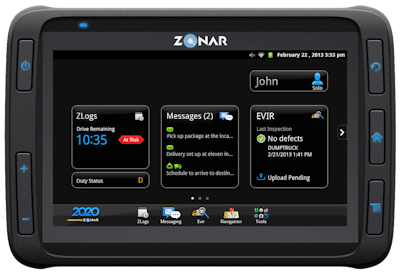“Staying connected” is more than a modern convenience; it’s a way of life, a habit, an expectation for anyone who owns a smartphone or tablet device.

Approximately 70 percent of drivers now own personal devices to keep themselves connected on the road. This fact is impossible to ignore for commercial and private fleets that must stay connected with drivers to run business applications like electronic logbooks, driver workflow, and performance monitoring.
Fleets typically use their own technologies to accomplish this list of must-haves, but when the wheels stop rolling, drivers often turn to personal smartphone or tablet devices to handle their other business needs like finding loads, planning routes and managing expenses. They may soon begin reserving parking spots and checking wait times at shower facilities.
Increasingly, commercial platforms are able to satisfy the needs of fleets and drivers through expanded hardware and connectivity options to external applications and services. In short, the following five trends are driving an evolution towards all-in-one mobility. Click to learn more:
1. Bring your own device to work>>










